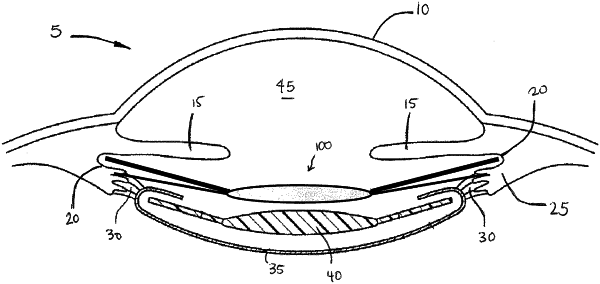| CPC A61F 2/1624 (2013.01) [A61F 2/1635 (2013.01); A61F 2/1602 (2013.01); A61F 2/1648 (2013.01); A61F 2002/1682 (2015.04); A61F 2250/0018 (2013.01); F04C 2270/041 (2013.01)] | 17 Claims |

|
1. A method of implanting an intraocular lens into an eye of a patient, the method comprising:
inserting into the eye a shape-changing lens body having an optical axis, wherein the lens body comprises:
an anterior surface configured to bow anteriorly due to application of a compressive force directed radially inward on a peripheral region of the lens body;
positioning a haptic so as to anchor and center the lens body within a portion of the eye, the haptic comprising:
an inner region coupled to the lens body; and
an outer region extending away from the lens body at a first angle with respect to the optical axis; and
positioning at least one force translation element relative to a capsular bag of the eye, the at least one force translation element comprising:
a first end engaged with the peripheral region of the lens body; and
a second end extending away from the peripheral region of the lens body at a second angle with respect to the optical axis of the lens body, the second angle being different than the first angle of the haptic;
contacting a ciliary structure with the second end of the force translation element outside of the capsular bag to transmit movement of the ciliary structure during ciliary muscle contraction; and
transferring the movement of the ciliary structure with the at least one force translation element into the compressive force on the peripheral region of the lens body so that the anterior surface of the lens body bows anteriorly.
|